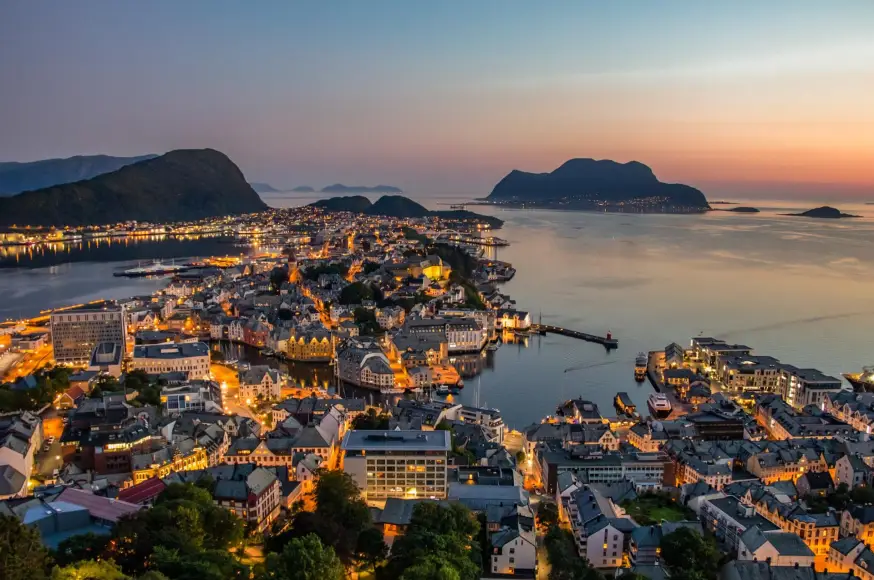
Port Flåm
Flåm, nestled in the heart of Norway’s fjord country, is a picturesque village renowned for its stunning natural landscapes and unique travel experiences. Located at the innermost point of the Aurlandsfjord, a branch of the larger Sognefjord (Norway’s longest and deepest fjord), Flåm attracts visitors seeking breathtaking views of fjords, mountains, and waterfalls.
One of Flåm’s most famous attractions is the Flåm Railway (Flåmsbana), considered one of the most scenic train journeys in the world. This 20-kilometer route climbs from sea level in Flåm to the mountain station of Myrdal, offering panoramic views of steep cliffs, cascading waterfalls, and emerald-green valleys. Visitors can also explore the fjords by boat, with cruises taking them through the Aurlandsfjord and the neighboring Nærøyfjord, both part of a UNESCO World Heritage Site. Whether hiking, cycling, or simply soaking in the natural beauty, Flåm offers a quintessential Norwegian fjord experience.
History
Flåm, a small village nestled in the heart of Norway's fjord region, has a rich history deeply connected to its stunning natural surroundings and its role as a transportation hub. The settlement's origins date back over a thousand years, with evidence suggesting it was primarily an agricultural community. Its name, "Flåm," is derived from the Old Norse word "Flá," meaning "plain" or "flat piece of land," a reference to the fertile valley floor where the village is located. Historically, Flåm's position along the Aurlandsfjord, a branch of the Sognefjord, made it an important location for trade and communication between Norway's coastal and inland regions.
The most significant development in Flåm's history came in the early 20th century with the construction of the Flåm Railway (Flåmsbana), which opened in 1940. Designed to connect Flåm to the Bergen Railway at Myrdal, it allowed easier access to the remote village and played a critical role in transporting goods and passengers. The railway, a marvel of engineering at the time, transformed Flåm from a quiet farming community into a key transportation link and, eventually, a major tourist destination. Today, the Flåm Railway not only serves as a historical landmark but also as a testament to the village’s evolution and its enduring connection to Norway's cultural and natural heritage.





 With bus transport to the port
With bus transport to the port



